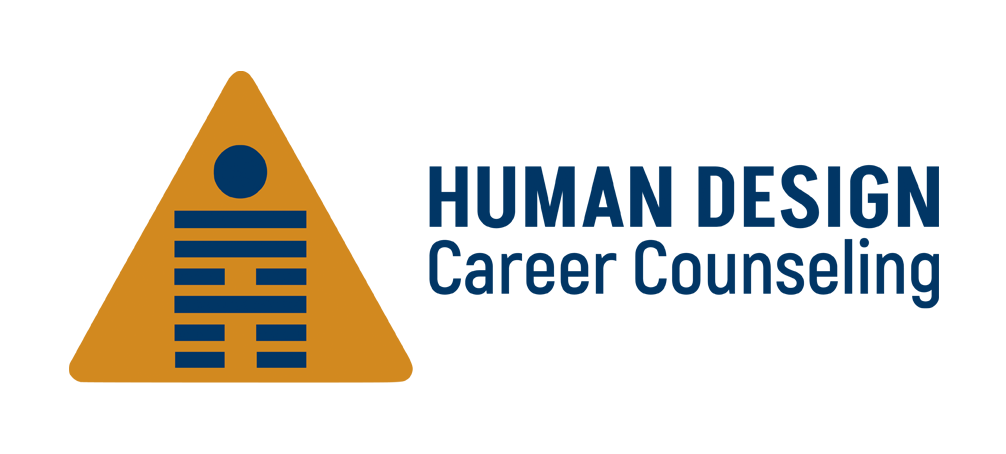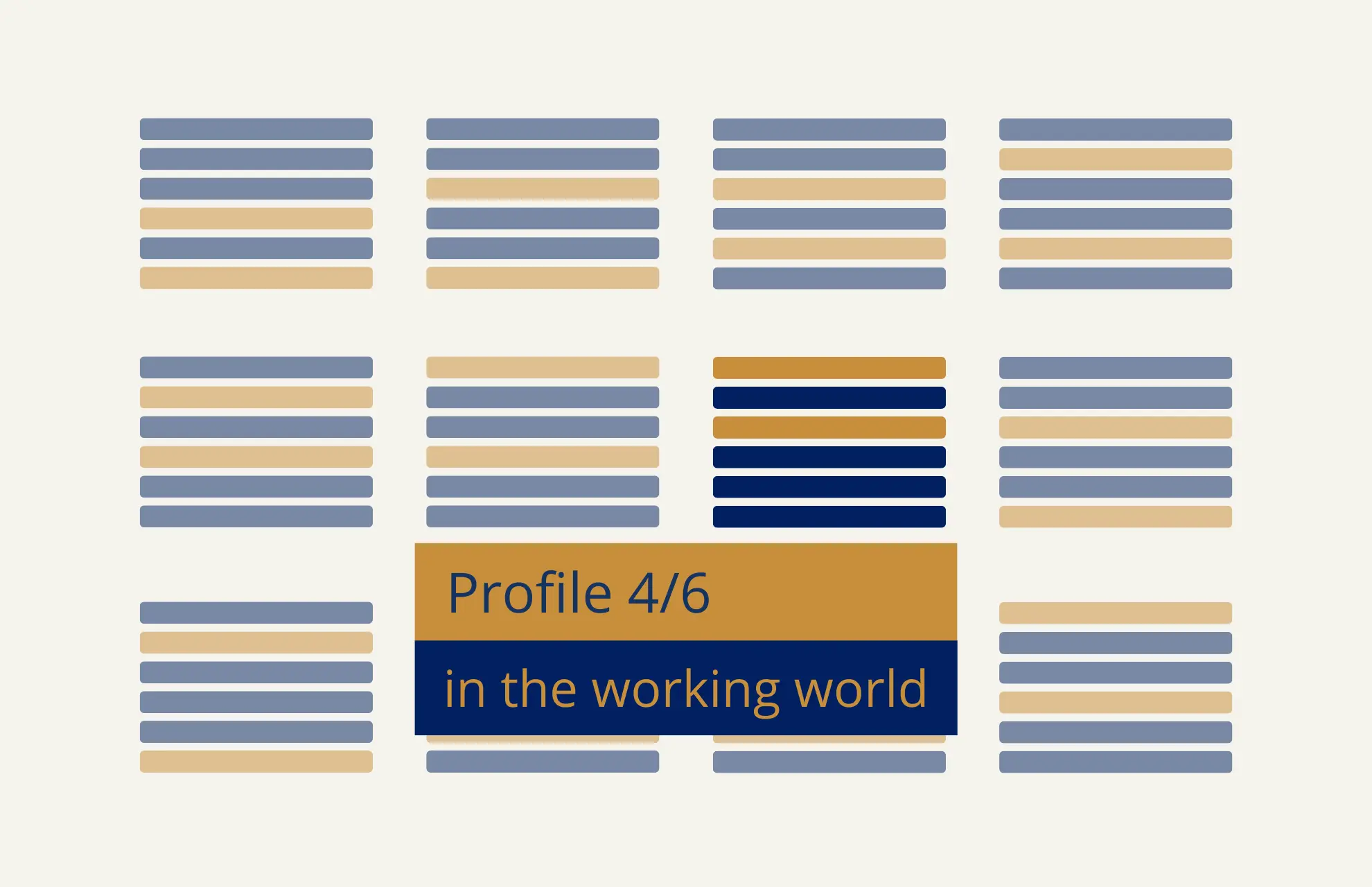Do you have the Human Design 4/6 profile? Then read this article to find out how your profile is made up and how you can use your profile to develop naturally in your professional life. Have fun reading!
The profiles in Human Design are based on the six lines of the basic structure of a hexagram from the I Ching, the Book of Changes (see illustration below). There are a total of 12 combinations of these lines that form a Human Design profile. In your case, these are the two lines 4 and 6. In your Human Design Chart, you will also find your two lines as a number behind the dot on your conscious sun (personality) and your unconscious sun (design).

Features of the Human Design lines
Each Human Design profile embodies a unique perspective on the world and a specific approach to life. Interesting traits can be derived from your profile. You should be aware of the character traits of the first digit. The number is on the right, conscious side of your Human Design chart (line of the gate on the sun sign).
You are rather unconscious of the traits in the second digit (left side of your chart), especially if you have not yet reached the second half of your life and have not yet fully integrated these traits into your personality. The Human Design 4/6 profile has exciting traits that you are sure to recognize in your career. So be curious to see how the 4/6 unfolds.
In traditional human design, certain character traits are assigned to the six lines of a hexagram (see illustration). These characteristics can be used to draw interesting conclusions about you as an employee or self-employed person. Between the first three and the second three lines (lower and upper trigram) there is a change in the way you approach life.

Discover the 4/6 profile and the meaning of the lines
The first three lines (viewed from bottom to top) indicate that the unfolding of your life is very much related to your own core essence. In general, it is a self-referential way of learning for life. So if you have a profile with line 1, 2, or 3, you discover life in a self-centered way with regard to that line. This is not the case for lines 4 and 6, but it is useful to know the polarity of the two trigrams (below and above).
Lines 4, 5 and 6 develop strongly in relation to your fellow human beings or colleagues. Human Design profiles can generally consist of two self-related lines (e.g. Human Design 1/3), two environment-related lines (e.g. Human Design 4/6) or a mix of self-related and environment-related lines, such as the Human Design 5/1 profile.
A person’s personal development always has to do with the inner and outer world. Nobody can only develop naturally “within their own four walls”, not even a self-centered Human Design profile. In the same way, nobody can only recognize themselves in the outside world, not even a profile with only 4, 5 or 6 lines. Without an object in the outside world, we do not recognize ourselves as a subject. The inner and outer worlds are always connected, just as yin and yang are connected (law of polarity).
“Nothing is inside, nothing is outside; for what is inside is outside.“
Goethe
The Human Design 4/6 profile at work
With the Human Design 4/6 profile, you combine the characteristics of the fourth and sixth lines. The fourth line, also known as the networker in a professional context, gives you a strong social component. You build social relationships easily and your networks are very important to you. These networks can open new doors and opportunities for you professionally. Your success often comes from interacting with those around you.
The sixth line represents the role model character of your profile. In the first phase of your life up to around 30, you go through a phase of trying things out and experimenting, similar to the third line. From around the age of 30, a phase of retreat and reflection begins in which you learn from your previous experiences. In the last phase of life, from around the age of 50, you step up into the role of mentor and use your wisdom and experience to inspire and guide others. You are perceived as trustworthy. Colleagues and superiors see you as a reliable and stable force they can turn to.
Both lines of your Human Design 4/6 profile have opposing views. At work, your fourth line is interested in direct (business) relationships, while the sixth line likes to observe from the outside. Line 4 is nourished by partnerships; line 6 can be overwhelmed by all the contacts.
In your fourth and sixth line combination, your strength lies in your ability to build deep and meaningful relationships as you learn from your personal and professional experiences and share this wisdom with others. Your overview gives you the full picture of what’s going on, but don’t forget to come down from your tower and share your insights with those around you. You are a person who is valued as both a friend and a mentor.
3 career tips for more success at work
Tip 1: Maintain your network
Use your natural ability to build and maintain relationships. In your professional life, these relationships are particularly valuable. They can help you discover new opportunities, get referrals and strengthen professional partnerships. Be active at professional networking events, on social media or at informal meetings with colleagues.
Tip 2: Share your knowledge and experience
As a Human Design 4/6 profile, you have the gift of learning from your experiences and passing this knowledge on to others. Use this ability to act as a mentor in your work environment. By helping others and sharing your knowledge with them, you not only strengthen your professional position, but also build trust and recognition.
Tip 3: Be patient with your professional development
Recognize that your career will develop in different phases, as the sixth line in your profile shows. There may be phases where you experiment
FAQ: Questions about Profile 4/6 in Human Design
What are the unique features of the Human Design 4/6 profile?
The Human Design Profile 4/6 is characterized by strong networking and interpersonal skills, as well as the ability to learn from life experiences and act as a mentor.
How can someone with a Human Design 4/6 profile best use their social skills in their job?
People with a Human Design 4/6 profile should use their natural inclination to network to build and strengthen professional relationships.
What challenges can arise for a person with a Human Design Profile 4/6?
One challenge for people with a Human Design Profile 4/6 could be the contradictory nature of the two lines. At work, the fourth line is interested in direct (business) relationships, while the sixth line likes to observe from the outside.
How would you describe the combination of the Human Design types with the Human Design 4/6 profile?
Here are suggested combinations for Human Design types with the Human Design Profile 4/6:
- Manifestor 4/6: Innovative role model
- Reflektor 4/6: Familiar role model with perspective
- Manifesting generator 4/6: Familiar role model with turbo power
- Generator 4/6: Playful mentor
- Projector 4/6: Leadership Mentor/Coach






0 Comments